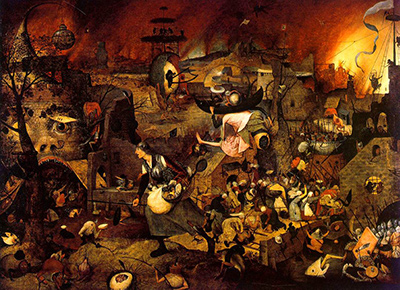A Dutch painter, Pieter Bruegel, was a big name when it came to Renaissance paintings. He trained under another Dutch painter from Antwerp, Pieter Coecke van Aels and later even married his daughter, Mayken.
Bruegel experimented with different themes in his work. His landscapes were usually very stark, and the different themes melded seamlessly into the background. Some of the recurring themes in Bruegel's work were peasant life, proverbs, and religion.
In this light, Dulle Griet or its Anglicised version, Dull Gret, is an unique painting. There is no natural background to the painting. Instead, we are apparently in hell as envisaged by Bruegel.
One woman stands out in the centre of the scene. She is Dulle Griet, a woman who is leading an army of other women to fight the devils in their own battleground. They are looting hell because of their greed.
The painting itself is based on a misogynist proverb published in 1568, that while one woman makes some noise, it can be borne. But the more the women, the more trouble there would be. The idea here is that women bonding together can spell trouble.
Here, Bruegel making fun of women having an opinion or wanting things. In a society that had no scope for women to advance on their own, they were made fun of for showing their displeasure with their situation.
This sexist attitude of the day is aptly described in Dulle Griet. It brings out the theme of how men feared powerful women because it would bring a society built on male supremacy come tumbling down.
The oil on panel painting, created in 1562, now hangs at the Museum Mayer van den Bergh in Antwerp.




